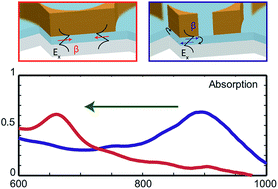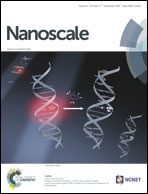Proximal gap-plasmon nanoresonators in the limit of vanishing inter-cavity separation†
Abstract
Nanostructured metal–insulator–metal (MIM) metasurfaces supporting gap-plasmons (GPs) show great promise due to their ability to manipulate or concentrate light at the nanoscale, which is of importance to a broad palette of technologies. The interaction between individual, proximal GP nanoresonators, reaching the point of first electrical connection, can have unexpected, important consequences and remains unexplored. Here we study the optical properties of a GP-metasurface in the limit of diminishing spacing between GP nanocavities and show that it maintains its nanoresonator array character, with negligible GP interaction, even at extremely close proximity between cavities. Then, at the point where inter-cavity electrical connection is first established, the surface abruptly transforms into a patterned metal–insulator–metal waveguide. We report detailed experimental evidence and explain the underlying physics through computational modeling and based on the properties and inherent symmetries of the electromagnetic field of the investigated metasurface. The novel phenomenon explored here can have a host of potential applications in the field of active plasmonic metamaterials, plasmonic photocatalysis and ultra-sensitive sensors.


 Please wait while we load your content...
Please wait while we load your content...